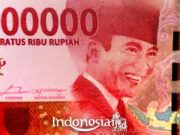The 1956 Catholic Party Conference in Nele Sikka promoted the formation of the Province of Flores. This is because the Catholic Party won in Flores in the first election in 1955. However, the delegation of the Timor Catholic Party commissariat, led by Frans Sales Lega, opposed the idea, asking: why did Flores not join Timor and Sumba?
The idea of establishing the Province of Flores failed. At a Catholic Party conference in Ende in 1957, Lega proposed one province for the entire former residency of Timor which included Timor, Flores, Sumba and the surrounding islands. This proposal was approved. The residency of Timor itself is part of the Lesser Sunda Province.
“The name Sunda Kecil was later changed to Nusa Tenggara by Minister Moh. Yamin, maybe not to create an inferiority complex for its citizens, ”said Ben Mboi in the memoir of a doctor, soldier, civil servant.
Relieved to approach the Head of the Timor Region, Stephanus Ndoen and the Timorese House of Representatives to lead the struggle for the formation of a new province. In Kupang a delegation was formed to meet the Minister of Home Affairs Sanusi Hardjadinata. The delegation consisted of Tobing as chairman, with members of Lega as spokesperson, N.D. Dillak, and Piet Parera-Fernandez.
“I remember well when, in 1957 I visited Pak Lega (and his entourage) at Hotel Des Indes, Jalan Majapahit Jakarta,” said Ben Mboi. “Most of the group had never been to Jakarta. They were afraid to cross Jl. Majapahit because of the congestion of traffic plus trams. “
To Ben Mboi, Lega told of his meeting with the Minister of Home Affairs Sanusi. “How many scholars do you have to create a province?” Sanusi asked Lega.
“In fact, so that we can make a bachelor, we want to form a province,” replied Lega who asked in return, “How many scholars were in Indonesia when the proclamation of 17 August 1945?” Sanusi didn’t answer.
Another effort was taken by Stephanus Ndoen by conducting sports diplomacy. Timor sent a separate contingent from the Nusa Tenggara contingent to the 1957 National Sports Week IV in Makassar. Relieved to lead the Timorese contingent.
According to Ben Mboi, names like Nani Manoe, Rudy Leiwakabessy, J.N. Manafe, a group of archers from Alor, soccer athletes (who were flooded with goals), and bicycle athletes who lost their way in Makassar City, are historical actors who are fighting for East Nusa Tenggara to gain recognition and to manage its own household. “They were hundreds of nameless heroes who carried the sand and bricks for the initial building called East Nusa Tenggara today,” said Mboi.
Minister of Home Affairs Sanusi then came to Kupang to witness for himself the spirit of life in Timor, Flores and Sumba, to form his own province. Finally, the Province of Nusa Tenggara was split into three provinces: Bali, West Nusa Tenggara (NTB), and East Nusa Tenggara (NTT). The ratification is based on Law no. 64 in 1958 dated 14 August 1958.
According to Mboi who was the third NTT Governor (1978-1983), the division was very heavy on an ideological burden. Bali, the majority are Hindu and controlled by the Indonesian National Party; the majority of the population of NTB is Muslim with the political power of Islamic parties (Masyumi and Nahdlatul Ulama); and NTT whose population is 90 percent Christian (55 percent Catholic, 35 percent Protestant) politically based on the Catholic Party and Parkindo (Indonesian Christian Party).
Even though they were born simultaneously, the inauguration of the three provinces was different: Bali (14 August 1958), NTB (17 December 1958), and NTT (20 December 1958). The first governor of NTT was Lalamentik, while Lega was the regent of Manggarai. To commemorate his services, Frans Sales Lega has been immortalized as the name of the airport in Ruteng, Manggarai.
Source : Historia

































